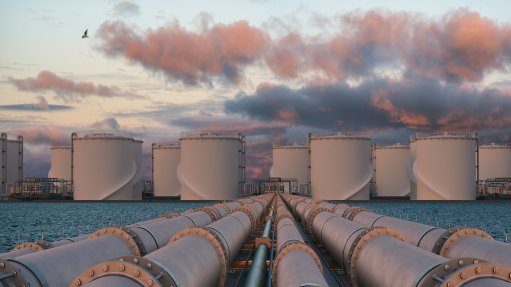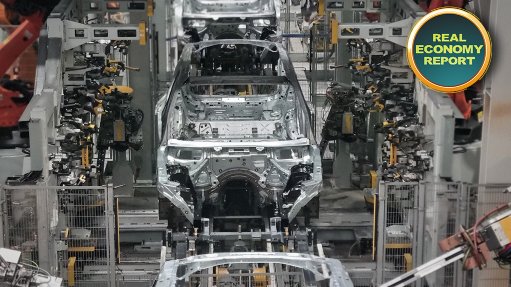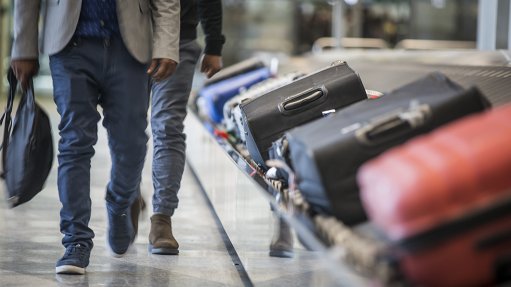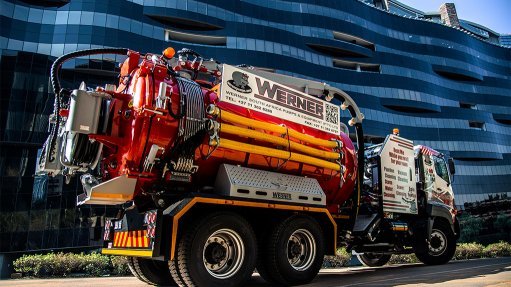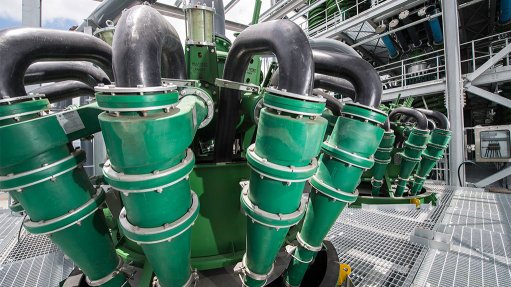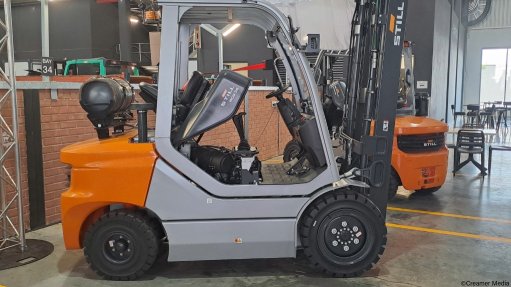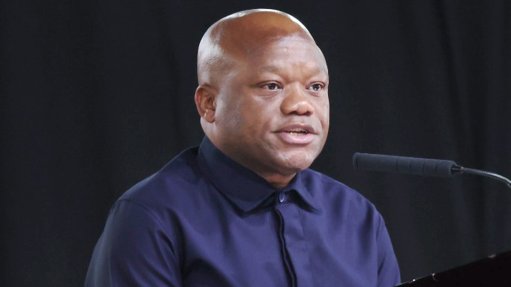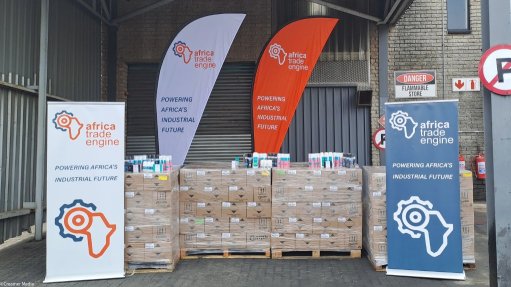New Lesotho Highlands Water Project Phase II assurances following setbacks

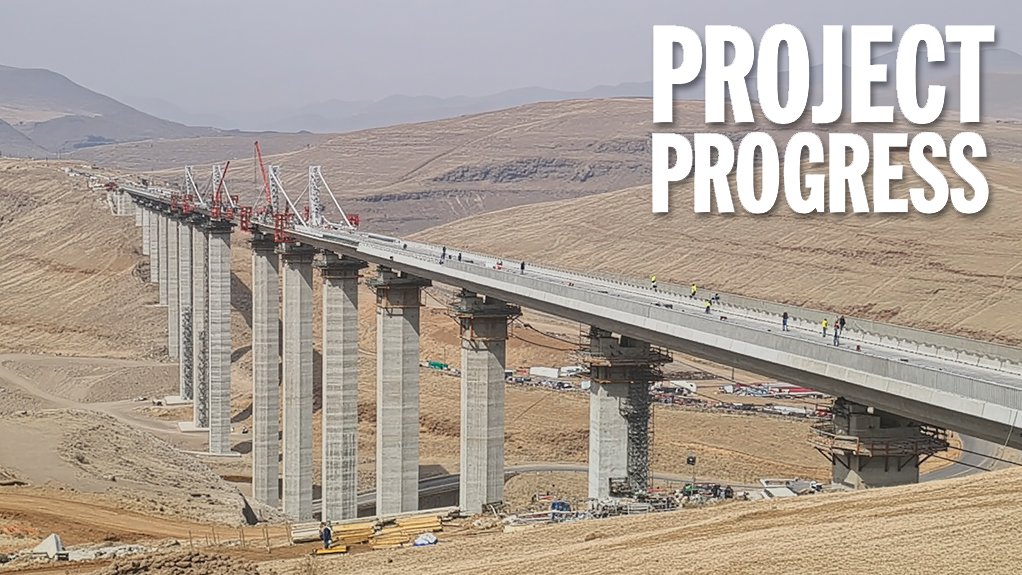
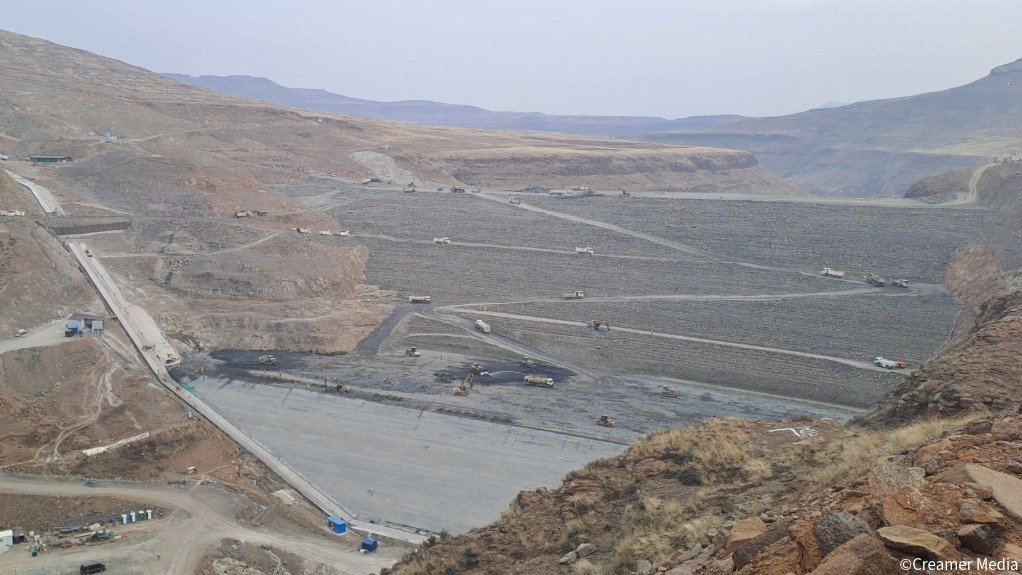
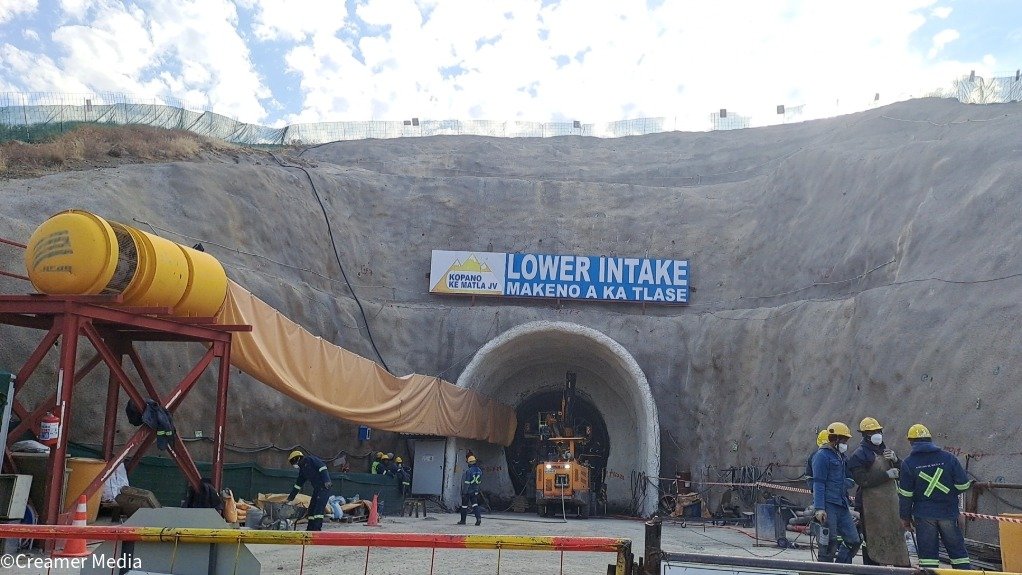
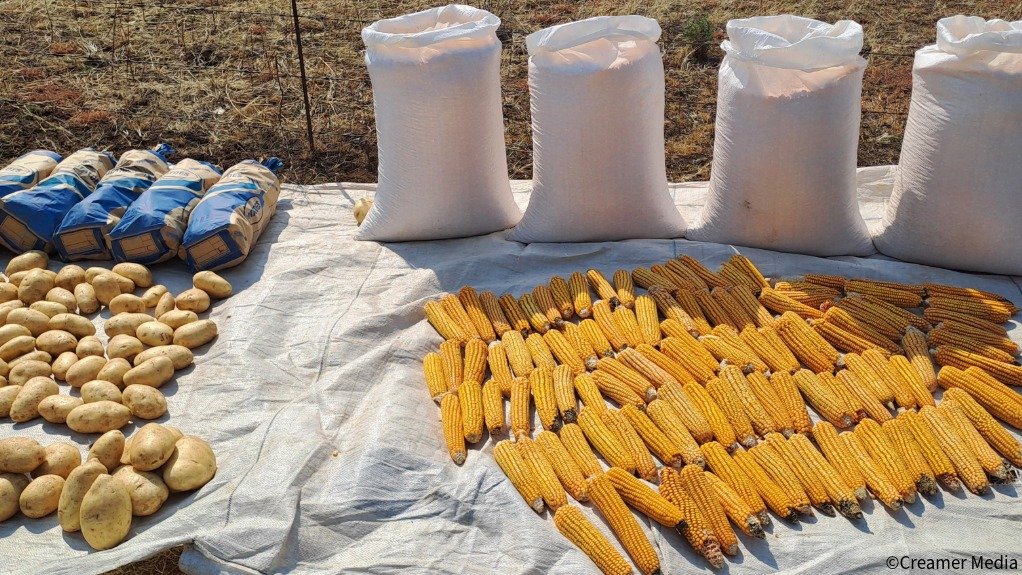
TAKING SHAPE Construction of the Polihali dam is underway
Photo by Creamer Media's Tasneem Bulbulia
TUNNEL VISION The 38.5 km Polihali transfer tunnel will carry water from the Polihali dam to the Katse dam
Photo by Creamer Media's Tasneem Bulbulia
LIVELIHOODS IMPROVEMENT The LHDA is supporting beekeepers, agricultural growers and fisheries that would be impacted on by the project
Photo by Creamer Media's Tasneem Bulbulia
The second phase of the Lesotho Highlands Water Project (LHWP) is achieving “rapid progress”, despite running into considerable delays, challenges and cost increases, with notable milestones having been achieved across the infrastructure, socioeconomic and environment components.
This was highlighted by the Lesotho Highlands Development Authority (LHDA) – which manages the project within Lesotho’s borders – during a week-long media tour of key Phase II components.
The LHWP is a mutually beneficial, binational project between the Lesotho and South African governments. It was established under a 1986 treaty and a 2011 agreement to harness the water resources of the Lesotho highlands to provide hydropower for Lesotho and augment water supplies to South Africa’s populous Gauteng province – and neighbouring provinces when the need arises.
Phase I included the Katse dam as its centrepiece, along with the Mohale dam, the Muela dam and hydropower plant, the Matsoku weir, and a network of tunnels linking these structures to transfer the water across the border to South Africa. Once the water enters the Ash river, it flows for another 200 km through natural watercourses, eventually reaching the Vaal dam.
Phase II is expected to start water transfer to South Africa in 2028/29, gradually increasing from Phase I’s 780-million cubic metres a year to more than 1 270-million cubic metres a year upon completion.
This phase comprises major infrastructure components, including the construction of the Polihali dam, the Polihali water transfer tunnel, the Oxbow hydropower scheme and three major bridges, along with associated advanced infrastructure in the Mokhotlong highlands of Lesotho.
Before these works could start, considerable foundational work was required. This part of the country is largely rural, characterised by winding mountainous terrain, meaning that roads, electricity, telecommunications, housing and health facilities, besides other elements, had to be built in advance.
With these now in place and the LHDA’s Polihali operations building completed, construction work is progressing at a steady pace.
Infrastructure Progress
The Polihali dam is a concrete-faced rockfill, 165-m-high dam that will create a 5 053 ha surface area reservoir on the Senqu and Khubelu rivers.
Main works contracts were awarded in November 2022 and construction started in early 2023. The most recent data indicates that the dam is about 36% complete and on schedule, despite earlier delays in site establishment and excavation.
The LHDA anticipates that, by 2026/27, the dam will be at a level where it can start collecting water. The remaining construction will continue concurrent to this process, with water delivery slated for 2028/29.
The 38.5 km Polihali transfer tunnel, which will carry water from the Polihali dam to the Katse dam, is also under construction.
One tunnel boring machine has been operating since January on the Katse side of the tunnel, while the other is being assembled on the Polihali side, having arrived from China, according to Metsi a Senqu-Khubelu Consultants (MSKC) project manager Freddie Laas. The MSKC Joint Venture is the consulting engineer for the tunnel.
The Oxbow scheme comprises a dam on the Malibamatso river and a hydropower station with an installed capacity of 80.3 MW and an average output of 180 GWh/y. The plant will be a peaking generation facility, operating six hours a day, all week long. It is expected to augment the Muela station’s electricity generation, which currently supplies 51% of Lesotho’s energy demand.
The scheme is at the detailed engineering design phase, with the engineers mulling the best solution, and commissioning slated for 2030/31, says LHDA public relations officer Malakeng Hloma.
The 825-m-long, 90-m-high Senqu bridge is the largest of a trio of bridges being built along the Maseru to Mokhotlong A1 road to ensure access across the Polihali dam, and connectivity to the national road network for communities.
The design principle for the bridge integrates functional and aesthetic objectives, with the intention of building infrastructure that provides livelihood benefits beyond project completion, including tourism. This is aligned to the LHDA’s goal of using its assets to generate income to support its livelihoods programmes.
The bridge will comprise a single carriageway in both directions, along with pedestrian walkways on either side.
Progress on the bridge’s construction was highlighted as “quite rapid”, at 90% completion. Following initial delays, completion is now expected by February next year – pushed back from the original target of November this year.
The initial cost estimate for the Senqu bridge is R2.3-billion, but this may increase, owing to several project modifications and claims that are already being processed.
There is also an upcoming contract for feeder roads from the bridge to the surrounding communities, with four pedestrian bridges and six vehicle bridges to be built. The other two bridges are also projected to be completed in the first quarter of next year.
Areas of Contention
The scale of the project brings with it hefty expectations for what it should achieve for Lesotho’s economy, and this can cause discontent as everything cannot be achieved, LHDA public relations manager Mpho Brown points out.
While the project is expected to drive job creation in Lesotho, it cannot fix structural problems and solve widespread unemployment in the country, although it has contributed to alleviating this to some extent, he adds.
This disconnect has manifested in a spate of strikes that have slowed down progress on the project, with communities raising concerns about unfair employment representation.
This was the case at the Senqu bridge, where some communities expressed unhappiness about the proportion of unskilled labour sourced from their areas. Employment was channelled through a labour desk and allocated by means of a ballot system, Zutari chief resident engineer Louis Joubert explains, adding that all components of the project have certain preference targets for the contractors. Zutari is responsible for the design and supervision of the three bridges.
Employment at Senqu peaked at 1 300 and has since tapering down to about 800.
Brown acknowledges that public perceptions about the delayed implementation of Phase II are correct, with works starting nine years after initially planned and completion originally scheduled for 2019/20.
These delays date back many years, he highlights, pointing to the “complex” governance structure of the project, which is aimed at ensuring equity between Lesotho and South Africa and requires unanimous approval of decisions.
While the Phase II agreement was signed in 2011, this bilateral negotiation process delayed ratification – a requirement for implementation to start – by two years.
The sourcing of consultants and financiers after ratification was also slow, further impeding project development, notes Brown. The pandemic then brought progress to a halt. Finally, there was movement at the end of 2022, with the main contracts for the dam, tunnel and bridges awarded.
There has also been much concern about the cost increases for Phase II, with the figure ballooning from the R8-billion projected in the feasibility study in 2008 to the current R53-billion long-term cost projection.
About R18.9-billion of this amount has been spent thus far, equating to about 36% of the total projected cost. This figure has remained unchanged since the re-baselining in May 2023, with no further increases expected until work is completed, Brown assures.
As project scopes and designs become more defined, and contracts are awarded, the cost estimates get closer to the true cost, adds Brown, cautioning against comparing the two figures at face value.
However, this is still a considerable increase, with delays having had a major impact, as they exposed Phase II to inflation and foreign exchange fluctuations.
Moreover, insights gained from Phase I indicated that more work needed to be done to equitably restore and improve the livelihoods of those affected by the project. Therefore, the inclusion of livelihoods restoration and improvement aspects such as the feeder road and social development masterplans, previously not sufficiently allocated to global standards, required more funds, Brown elaborates.
Phase II also faced contractor issues, with the Kopano Ke Matla Joint Venture, which is overseeing construction of the tunnel, suspended in May and made to stop work, after it was found guilty of non- compliance on its wastewater treatment plants.
This suspension has since been lifted, and work has resumed, with the immediate risk deemed to be mitigated, and a long-term measurable plan put in place.
Affected Communities
As the LHDA undertakes the “largest development project in Lesotho”, it is responsible for ensuring that livelihoods are “improved and not destroyed”, access to water is inclusive, rural areas are electrified and ecosystems are protected and preserved, Brown emphasises.
Efforts to achieve the latter objective include establishing structures to prevent overgrazing, removing invasive species and restore and rehabilitate wetlands.
The LHDA is also undertaking a continuous, engaged approach to compensation and resettlement, playing an advisory role to the affected people and communities, providing financial planning support and hiring social workers to manage the transitions.
The LHDA has paid out R154-million in compensation thus far under Phase II.
Studies indicate that upwards of 5 000 ha, including arable and grazing lands, will be impacted on by Phase II, with as many as 2 384 households affected, and 270 needing to be resettled. Thus far, 24 have been resettled.
The LHDA has also established five commodity groups to support beekeepers, agricultural growers and fisheries that would be impacted on by the project.
It is also undertaking skills development, including training in areas such as tourism, to provide skills beyond the project.
Hloma indicates that, in principle, there is an agreement to reassess the treaty, with some elements potentially requiring re-negotiation. While this would not affect the progress of Phase II, it might impact on the next two phases, as the LHWP is envisaged as a four-stage project.
Article Enquiry
Email Article
Save Article
Feedback
To advertise email advertising@creamermedia.co.za or click here
Comments
Press Office
Announcements
What's On
Subscribe to improve your user experience...
Option 1 (equivalent of R125 a month):
Receive a weekly copy of Creamer Media's Engineering News & Mining Weekly magazine
(print copy for those in South Africa and e-magazine for those outside of South Africa)
Receive daily email newsletters
Access to full search results
Access archive of magazine back copies
Access to Projects in Progress
Access to ONE Research Report of your choice in PDF format
Option 2 (equivalent of R375 a month):
All benefits from Option 1
PLUS
Access to Creamer Media's Research Channel Africa for ALL Research Reports, in PDF format, on various industrial and mining sectors
including Electricity; Water; Energy Transition; Hydrogen; Roads, Rail and Ports; Coal; Gold; Platinum; Battery Metals; etc.
Already a subscriber?
Forgotten your password?
Receive weekly copy of Creamer Media's Engineering News & Mining Weekly magazine (print copy for those in South Africa and e-magazine for those outside of South Africa)
➕
Recieve daily email newsletters
➕
Access to full search results
➕
Access archive of magazine back copies
➕
Access to Projects in Progress
➕
Access to ONE Research Report of your choice in PDF format
RESEARCH CHANNEL AFRICA
R4500 (equivalent of R375 a month)
SUBSCRIBEAll benefits from Option 1
➕
Access to Creamer Media's Research Channel Africa for ALL Research Reports on various industrial and mining sectors, in PDF format, including on:
Electricity
➕
Water
➕
Energy Transition
➕
Hydrogen
➕
Roads, Rail and Ports
➕
Coal
➕
Gold
➕
Platinum
➕
Battery Metals
➕
etc.
Receive all benefits from Option 1 or Option 2 delivered to numerous people at your company
➕
Multiple User names and Passwords for simultaneous log-ins
➕
Intranet integration access to all in your organisation










